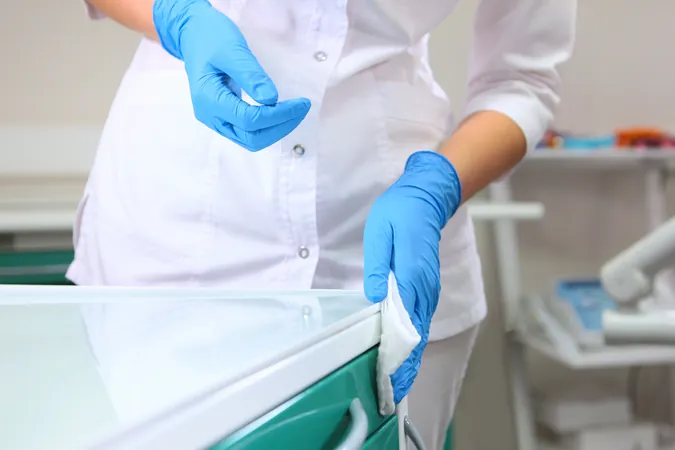
Groundbreaking Research Reveals Aldehyde-Based Disinfectants Could Slash Hepatitis A Virus Transmission Rates!
2025-04-04
Author: Daniel
Introduction
A striking new study has revealed that only two aldehyde-based surface disinfectants can effectively reduce the levels of the hepatitis A virus (HAV) on surfaces, suggesting significant potential for enhanced hygiene practices in controlling its spread. With HAV responsible for around 159 million acute infections globally each year, primarily in regions of Africa, Asia, and Latin America, this research could change the trajectory of hepatitis prevention efforts.
Transmission of Hepatitis A
Hepatitis A is a contagious virus that is primarily transmitted through the fecal-oral route, often via contaminated food and water. The repercussions can be dire, particularly for adults, with symptoms like jaundice, vomiting, and abdominal pain emerging in roughly 70% of cases. Meanwhile, children often experience mild or no symptoms, making it crucial to develop robust public health strategies to minimize transmission.
Importance of Disinfectants
In light of the lack of specific treatments for HAV, the study highlights the importance of effective surface disinfectants to limit spreading. Conducted over a 60-day period, researchers evaluated the stability of HAV on stainless steel surfaces and how different commercial disinfectants affected the virus. In total, nine disinfectants were tested, categorized as alcohol-based, aldehyde-based, peracetic acid-based, oxygen-based, and hydrogen peroxide-based.
Key Findings
Lilli Pottkämper, a doctoral student and one of the study's authors, emphasized the findings, stating, “We detected infectious particles on the surface for up to 40 days, indicating the virus's considerable stability. Only the two aldehyde-based disinfectants were effective in significantly lowering the risk of infection.” Remarkably, the study found that HAV could be recoverable from the surfaces for up to an astonishing 40 days, with a half-life of approximately 18.6 days. These findings underscore the persistent threat that surfaces can pose in terms of viral transmission, paralleling similar findings for other pathogens, including SARS-CoV-2.
Challenges and Future Research
Moreover, the study authors cautioned that translating laboratory results to real-world scenarios requires further investigations. They pointed out the need for more realistic assessments of how HAV can transfer from contaminated surfaces to human skin. Advancements in testing methods, like the touch-transfer assay used for SARS-CoV-2, could yield valuable insights into preventing the virus's spread.
Implications of the Study
Pottkämper also noted, “As it stands, effective surface disinfection could play a vital role in preventing infection, especially in settings with high rates of transmission. Our findings advocate for broader implementation of aldehyde-based disinfectants in hygiene protocols.” With the world grappling to control various viral outbreaks, this study underscores the need for continuous research and validation of effective cleaning and disinfection methods, paving the way for potential new standards in hygiene practices to combat hepatitis A virus spread.
Conclusion
Stay tuned as more researchers delve into this critical area, potentially reshaping how we approach public health safety!

 Brasil (PT)
Brasil (PT)
 Canada (EN)
Canada (EN)
 Chile (ES)
Chile (ES)
 Česko (CS)
Česko (CS)
 대한민국 (KO)
대한민국 (KO)
 España (ES)
España (ES)
 France (FR)
France (FR)
 Hong Kong (EN)
Hong Kong (EN)
 Italia (IT)
Italia (IT)
 日本 (JA)
日本 (JA)
 Magyarország (HU)
Magyarország (HU)
 Norge (NO)
Norge (NO)
 Polska (PL)
Polska (PL)
 Schweiz (DE)
Schweiz (DE)
 Singapore (EN)
Singapore (EN)
 Sverige (SV)
Sverige (SV)
 Suomi (FI)
Suomi (FI)
 Türkiye (TR)
Türkiye (TR)
 الإمارات العربية المتحدة (AR)
الإمارات العربية المتحدة (AR)